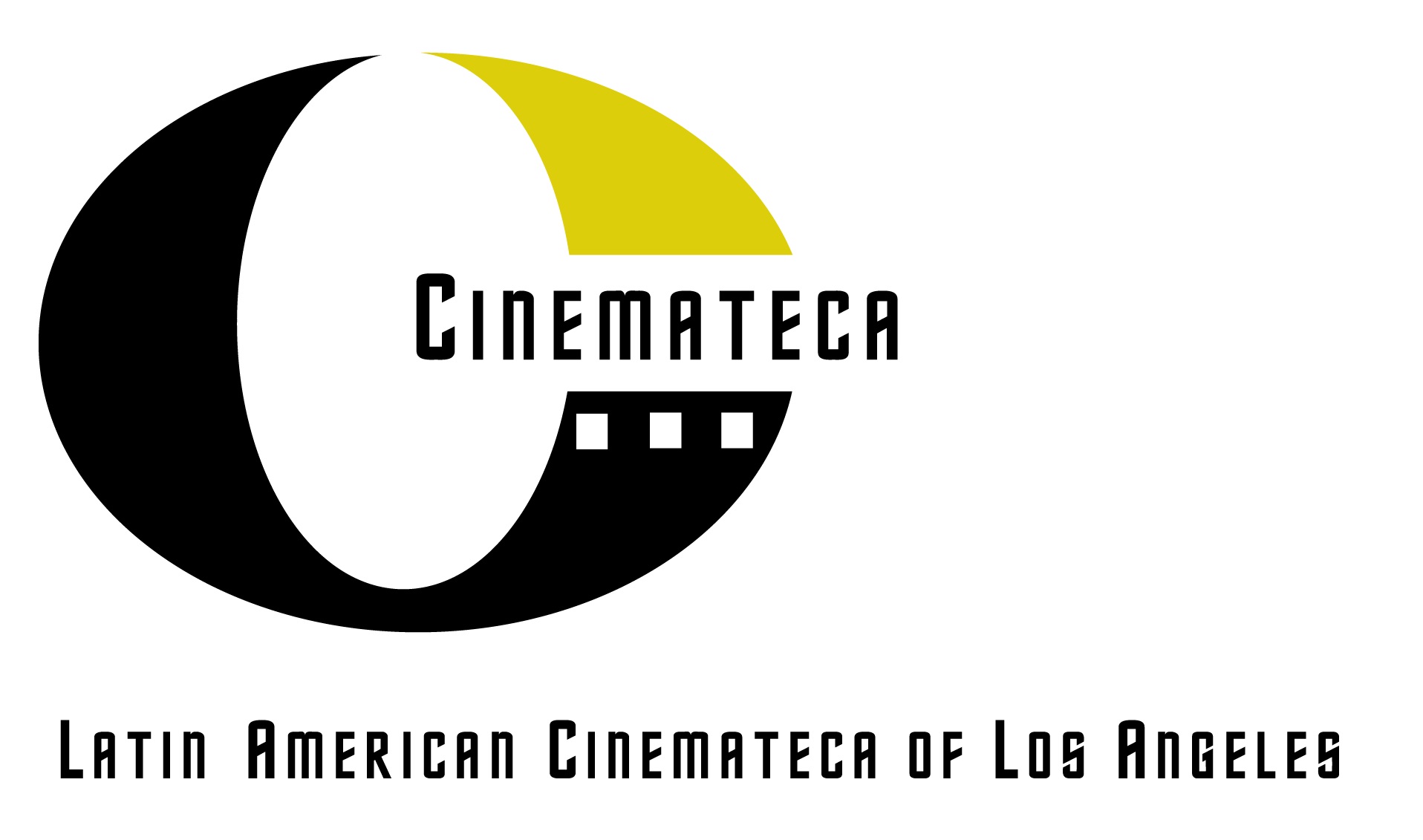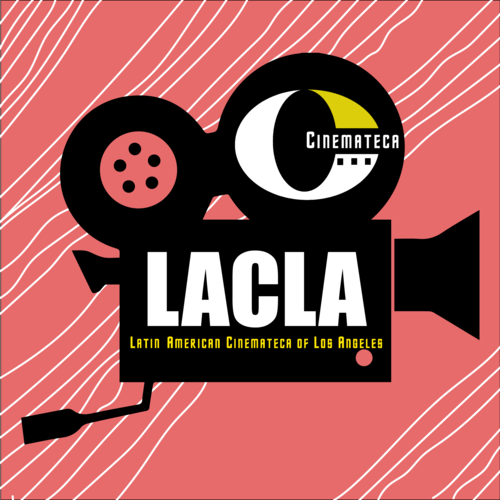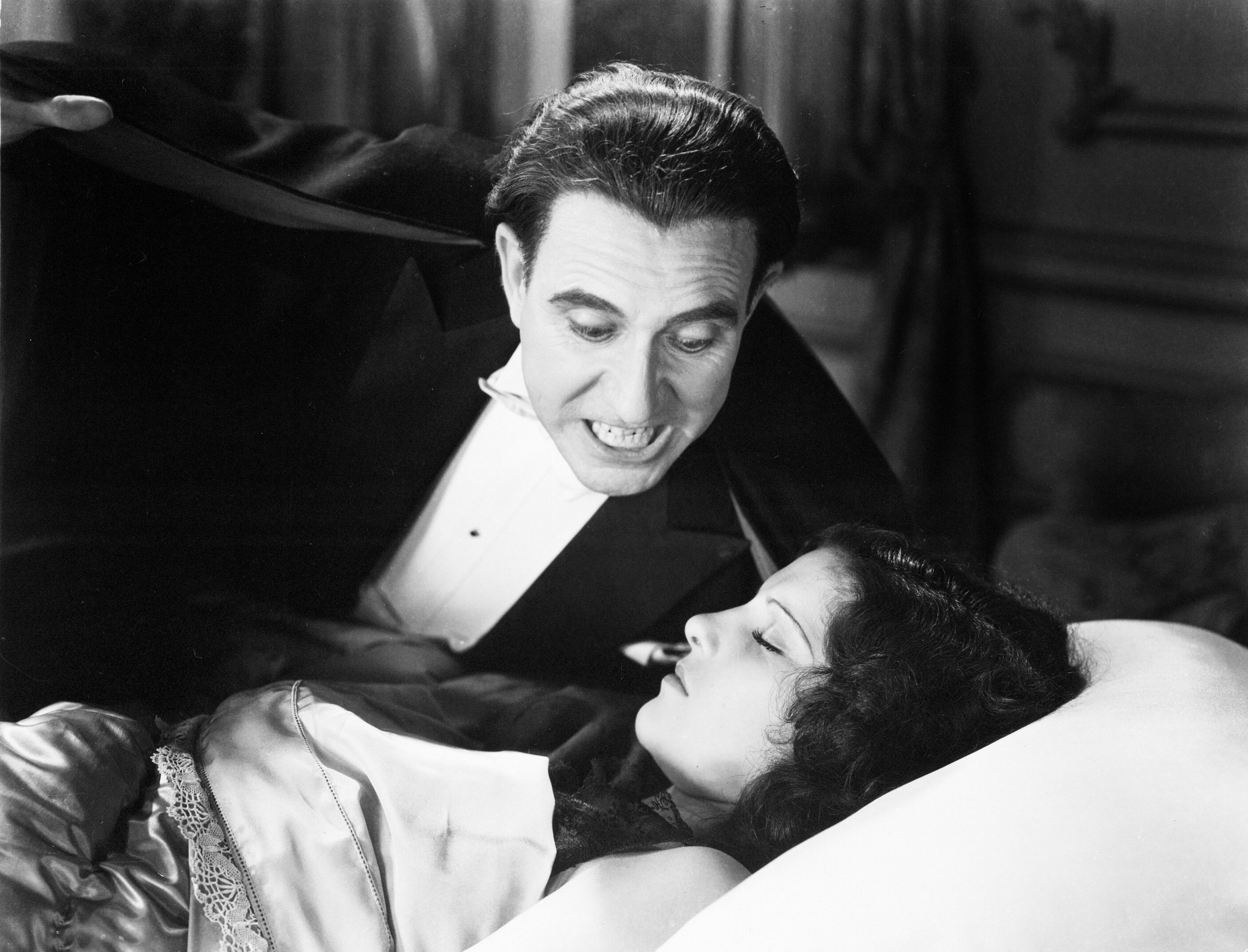co-Present
Drácula
Year: 1931, USA
Duration: 103 minutes
Director: George Melford.
Screenwriter: Garrett Fort, B. Fernández Cué (Spanish-language adaptation).
With: Carlos Villarías, Lupita Tovar, Barry Norton.
About THE FIlm
Drácula (1931)
Program Notes for the Latin American Cinemateca of Los Angeles
By María Elena de las Carreras
Los Angeles, October 2022
This is the second joint program between the Latin American Cinemateca of Los Angeles and the UCLA Film & Television Archive. Once more this collaboration is devoted to Spanish-language cinema made in Los Angeles in the 1930s. These two films bookend the decade: Verbena trágica (1938), featured in 2021, was an independent production attempting to capitalize on Spanish-language audiences in the US and Latin America once the sound technology was well in place by the mid-30s. Drácula (1931), on the other side, was made by a Hollywood studio figuring out how to keep the large Hispanic market, when the coming of sound disrupted the business model, and the films made in Mexico, Argentina and Spain seemed to challenge Hollywood’s supremacy. (1)
Also, like Verbena trágica, the Library of Congress selected Drácula for preservation in the National Film Registry, finding it “culturally, historically, or esthetically significant”. Drácula is an interesting example how film esthetics (the horror genre), an innovation (sound) and the business of the Dream Factory intersect in cinema history.
Based on the epistolary 1897 novel by Bram Stoker, but rerouted through its stage play of 1924, revised in 1927, Drácula was produced by Universal Studios, as a Spanish-language version of the English original. The studio strategy, in the midst of the Depression, was to shift to pictures less expensive than spectacular productions like All Quiet on the Western Front (1930). Dracula and Frankenstein, made and released in 1931, directed by Tod Browning and James Whale, were the first titles to establish the conventions and visuals of the horror film in the sound era. They were both box-office hits and made Universal Studios synonymous with this new genre. The wonderful documentary by Kevin Brownlow, Universal Horror (1998) is a trip through the highlights of these films, featuring the parallel stories of Dracula and Drácula. Well worth watching as a companion piece to this screening. (2)
The Spanish version was shot between October and November 1930, using the same sets of the English version, starring Hungarian-born Bela Lugosi (the vampire reference par excellence) as Count Dracula and Helen Chandler as Mina, the virginal English woman who becomes his victim. In an interesting choice of casting by producer Paul Kohner, in charge of the foreign-version productions at Universal, a very young Mexican actress, Lupita Tovar became Mina’s Hispanic version, Eva, equally virginal looking, but costumed in sexy outfits. In her charming memoir, published in 2011, Lupita Tovar devotes a chapter to her second film for Universal, after establishing herself in La voluntad del muerto (1930), the Spanish version of The Cat Creeps.
“George Melford was hired to direct, with a cast including Carlos Villarías, Pablo Álvarez Rubio, Barry Norton (from Argentina), Carmen Guerrero, Manuel Arbó, Eduardo Arozamena and me. We used the same sets and the same script translated into Spanish, but a completely different crew led by cameramen George Robinson. Paul [Kohner] was the supervising producer of both films but his heart was with our version. We shot at night, while the English-speaking cast filmed during the day. The American version had started two weeks earlier so we were able to use the sets they had already finished with. Only Carlos Villarías, who played Count Drácula, was allowed to see dailies. He was encouraged to be as “Lugosi-like” as possible. The rest of the us were on our own. Paul wanted our film to be better than the English-language version. George Robinson, our lighting cameraman, lit our sets with creepy shadows and added cobwebs everywhere. My nightgown was much sexier than the one Helen Chandler were and, perhaps because we were filming at night, our actors seemed even more menacing.
We had tremendous respect for our director George Melford. He was like a god to us. But there was some tension on the set because we knew we were competing with the American Dracula; we felt pressure to perform better than them. We were trying so hard. We finished our film in only twenty-two nights; the American version took seven weeks. (3) Pancho Kohner - the son of Lupita Tovar and Paul Kohner, who were married in 1932 - recounted how Drácula, unseen for decades and hence barely warranting a mention in film history books, was found in a New Jersey warehouse in the 1970s. The American Film Institute made a print for a Universal Studios retrospective at the Museum of Modern Art. But the nitrate negative had begun to decompose and was incomplete. The only other existing print was found at the Cinemateca de Cuba, and after some maneuvering by the UCLA Film & Television Archive, navigating Cold War era restrictions, a new negative was struck in 1991. Drácula “resuscitated” in Havana, as the program notes for a screening of the restored film in Cuba cheekily noted. And the film has been available since, as a bonus material for the DVD and BluRay releases of the original Dracula. (4)
Those interested in the ramifications of Dracula into the Hispanic imagination will enjoy watching, or reviewing in this context, the intriguing variations woven into the blood-thirsty count by Guillermo del Toro in his debut film Cronos (1993): the erotic angle is erased and a Catholic sense of sacrifice and redemption underpins the Mexican vampire’s last and fatal decision. A more orthodox take on the bloodthirsty vampire is the classic mid-century Mexican horror El vampire (1957), directed by Fernando Méndez.
One final note, the grandchildren of Lupita Tovar and Paul Kohner, the filmmakers Chris and Paul Weitz (About a Boy A Better Life, Fatherhood) are writing and directing Spanish Dracula, what else but the love story of their grandparents and the filming of the Spanish version. (5) Needless to say, the screening of the 1931 Drácula at the Billy Wilder Theater, the home of public programs of the UCLA Film & Television Archive, on October 29, will be a thrill for aficionados of the horror genre and Halloween.
Notes
(1) As noted by film historian Lisa Jarvinen, 30% of Hollywood trade was with Latin America. The Rise of Spanish-Language Filmmaking: Out from Hollywood's Shadow, 1929-1939 (2012). For a recent survey of these films aimed at the Hispanic market, see Juan B. Heinink and Robert G. Dickson, “Cita en Hollywood”, in Hollywood Goes Latin. Spanish-language Cinema in Los Angeles, edited by María Elena de las Carreras and Jan-Christopher Horak (2019). (2) Universal Horror (1998), directed by Kevin Brownlow. YouTube: https://www.youtube.com/watch?v=58L_iy6UV_4 (3) Lupita Tovar, The Sweetheart of Mexico. A Memoir. As Told to Her Son Pancho Kohner (2011). Chapter 15, pages 80-81. (4) The saga of the missing parts, the Cuban discovery and the restoration is recounted by David J. Skal in Hollywood Gothic: The Tangled Web of Dracula from Novel to Stage to Screen (2004) and in Spanish by Reynaldo Gonzalez “Drácula resucitó en La Habana” (1991). See also Roberto Green Quintana, “Buried in the Vaults: The Restoration of Hollywood’s Spanish-language films”, in Hollywood Goes Latin. Spanish-language Cinema in Los Angeles, edited by María Elena de las Carreras and Jan-Christopher Horak (2019). (5) Mike Fleming, “Chris & Paul Weitz to Direct Spanish Dracula; Love story of their Mexican silent film actress grandmother Lupita Tovar and storied Universal Exec Paul Kohner”. Deadline, February 15, 2022. https://deadline.com/2022/02/chris-weitz-paul-weitz-the-spanish-dracula-mexican-actress-grandmother-lupita-tovar-unversal-exec-paul-kohner-1234926792/
Drácula (1931)
Notas sobre Drácula, programa de la Latin American Cinemateca de Los Angeles
Por María Elena de las Carreras
Los Angeles, Octubre de 2022
Este es el segundo programa organizado por la Latin American Cinemateca de Los Angeles con UCLA Film & Television Archive (archivo de cine y television). Una vez más, el programa está dedicado al cine hecho en español en la década del treinta en Los Angeles. Estas dos películas enmarcan la década: Verbena trágica (1938), exhibida en el 2021, fue una produccion independiente destinada al público de habla española en Estados Unidos y Latinoamérica, ya consolidada la tecnología sonora a mediados de los años treinta. Por su parte, Drácula (1931) fue realizada por un estudio de Hollywood, que buscaba retener el mercado hispano, cuando la llegada del cine sonoro desarticuló el modelo económico, y las películas hechas en México, Argentina y España desafiaban la supremacía norteamericana. (1)
Al igual que Verbena trágica, la Biblioteca del Congreso de Estados Unitods incluyó Drácula en su programa de preservación, el National Film Registry, por ser un film “cultural, histórica o estéticamente significativo”. Drácula es un ejemplo relevante para estudiar la intersección de la estética cinematográfica (el género de terror), una innovación tecnológica (el sonido) y el funcionamiento económico de la Fábrica de Sueños.
Basada en la novela epistolar de Bram Stoker, publicada en 1897, según su adaptación teatral de 1924 revisada en 1927, Drácula fue una producción de los Estudios Universal, rodada en castellano, sobre el mismo guión y usando los mismos decorados que la versión original en inglés. La estrategia de Universal, durante la Gran Depresión, consistía en realizar de películas de menor costo que producciones espectaculares como All Quiet on the Western Front (1930). Dracula y Frankenstein, rodados y estrenados en 1931, dirigidos por Tod Browning y James Whale, fueron los primeros títulos que consolidaron el estilo y las convenciones y las convenciones narrativas de los films de terror en el cine sonoro. Ambos fueron éxitos de taquilla y convirtieron a Universal en sinónimo del nuevo género.
Vale la pena ver el informativo documental del historiador británico Kevin Brownlow, Universal Horror (1998), no sólo por su presentación de los grandes ejemplos del género, sino también porque se ocupa de las historias paralelas de Dracula y Drácula. El documental es un excelente complemento al programa de la Cinemateca. (2)
La versión en español se rodó durante octubre y noviembre de 1930, utilizando los mismos sets de la versión inglesa, protagonizada por el actor húngaro Bela Lugosi como el Conde Dracula – el vampiro por antonomasia – y Helen Chandler en el papel de Mina, la virginal joven británica que se convierte en su víctima.
Paul Kohner, el productor a cargo de las versiones extranjeras en los estudios Universal, eligió una actriz mexicana muy joven, Lupita Tovar, para el rol de Mina, aquí llamada Eva, igualmente virginal pero vestida con mucho “sex-appeal”. En sus encantadoras memorias, Lupita Tovar dedica un capítulo a su segunda película para Universal, después de haber rodado La voluntad del muerto (1930), la versión en castellano de The Cat Creeps.
“George Melford fue contratado para dirigir Drácula, con un elenco que incluía a Carlos Villarías, Pablo Álvarez Rubio, el argentino Barry Norton, Carmen Guerrero, Manuel Arbó, Eduardo Arozamena y yo. Utilizamos los mismos decorados y el mismo guión traducido al español, pero un equipo de rodaje completamente diferente, al mando del camarógrafo George Robinson. Paul [Kohner] era el producotr que supervisaba las dos películas pero su corazón estaba con nuestra versión. Rodábamos de noche, mientras que el equipo en inglés lo hacía de día. Habían empezado dos semanas antes, y por eso nosotros pudimos filmar en los sets que ya habían terminado de usar.
Solamente Carlos Villarías, que interpretaba al Conde Drácula, estaba autorizado a ver los “dailies” de la versión inglesa, para parecerse lo más posible a Bela Lugosi. El resto del equipo, no. Paul quería que nuestra película fuera mejor que la original. George Robinson, encargado de la iluminación, filmó los decorados con sombras tenebrosas y agregó telarañas por todos lados. Mi camisón era mucho más provocativo que el de Helen Chandler, y quizás porque filmábamos de noche, nuestro actores parecían todavía más amenazadores.
Teníamos un respeto tremendo por nuestro director George Melford. Para nosotros era como Dios. Pero había cierta tensión en el set porque sabíamos que estábamos compitiendo con el Dracula norteamericano; sentíamos la presión de ser mejores que ellos. Realmente nos esforzábamos. Terminamos la película en veintiocho noches contra siete semanas del Dracula en inglés. (3) Pancho Kohner – el hijo de Lupita Tovar y Paul Kohner, que se casaron en 1932 – cuenta como Drácula, que al no mostrarse en cine durante años apenas merecía una mención en los libros de historia, apareció en un depósito de películas en Nueva Jersey en los años setenta.
El American Film Institute hizo una copia para la retrospectiva del Museo de Arte Moderno sobre los Estudios Universal. Pero el negativo en nitrato, además de incompleto, estaba deteriorándose. La única otra copia existente estaba en la Cinemateca de Cuba, y gracias a la intervención del UCLA Film & Television Archive, sorteando restricciones vigentes desde la Guerra Fría, se pudo hacer una nuevo negativo en 1991. Literalmente, “Drácula resucitó en La Habana” cuando la película restaurada se proyectó en la capital cubana. Desde entonces Drácula se incluye como material extra en los DVDs y BluRay del Dracula original. (4)
Quienes se interesan por las ramificaciones de Drácula en la imaginación hispana, podrán disfrutar observando la variante sorprendente que Guillermo del Toro que brinda al conde sanguinario en su primer largometraje, Cronos (1993): el costado erótico desaparece, reemplazado por el concepto católico de sacrificio y redención, que redefine al protagonista en la escena final. Una visión más ortodoxa de Drácula la ofrece El vampiro (1957), un clásico de terror del cine mexicano, dirigida por Fernando Méndez.
Una última observación: los nietos de Lupita Tovar and Paul Kohner, los realizadores Chris y Paul Weitz (About a Boy, A Better Life, Fatherhood), están trabajando como guionistas y directores en un nuevo Proyecto, Spanish Dracula. Recrean el romance de sus abuelos durante el rodaje de Drácula. (5) No hace falta decir que la exhibición de Drácula en el teatro Billy Wilder, la sede de los programas públicos del UCLA Film & Television Archive, el próximo 29 de octubre, ofrecerá una velada magnífica a quienes les gustan el cine de terror y Halloween.
Notes
(1) Como observa la historiadora Lisa Jarvinen, el 30% del comercio de Hollywood era con América Latina. The Rise of Spanish-Language Filmmaking: Out from Hollywood's Shadow, 1929-1939 (2012). Para tener un panorama del cine hecho en español en Los Angeles, ver Juan B. Heinink and Robert G. Dickson, “Cita en Hollywood”, en Hollywood Goes Latin. Spanish-language Cinema in Los Angeles, editado por María Elena de las Carreras y Jan-Christopher Horak (2019). (2) Universal Horror (1998), dirigido by Kevin Brownlow. YouTube: https://www.youtube.com/watch?v=58L_iy6UV_4 (3) Lupita Tovar, The Sweetheart of Mexico. A Memoir. As Told to Her Son Pancho Kohner (2011). Chapter 15, pages 80-81. [Texto traducido al español por María Elena de las Carreras, por no contar con la versión en castellano, publicada en 2012: Lupita Tovar "La Novia de Mexico.
(4) El libro de David J. Skal, Hollywood Gothic: The Tangled Web of Dracula from Novel to Stage to Screen (2004) detalla las aventuras del film, su descubrimiento en Cuba y la restauración. Reynaldo Gonzalez escribió las notas para el programa en La Habana, titulándolas “Drácula resucitó en La Habana” (1991). Asimismo, puede consultarse con provecho el capítulo de Roberto Green Quintana, “Buried in the Vaults: The Restoration of Hollywood’s Spanish-language films”, en Hollywood Goes Latin. Spanish-language
Cinema in Los Angeles, editado por María Elena de las Carreras y Jan-Christopher Horak (2019). (5) Mike Fleming, “Chris & Paul Weitz to Direct Spanish Dracula; Love story of their Mexican silent film actress grandmother Lupita Tovar and storied Universal Exec Paul Kohner”. Deadline, February 15, 2022. https://deadline.com/2022/02/chris-weitz-paul-weitz-the-spanish-dracula-mexican-actress-
grandmother-lupita-tovar-unversal-exec-paul-kohner-1234926792/






